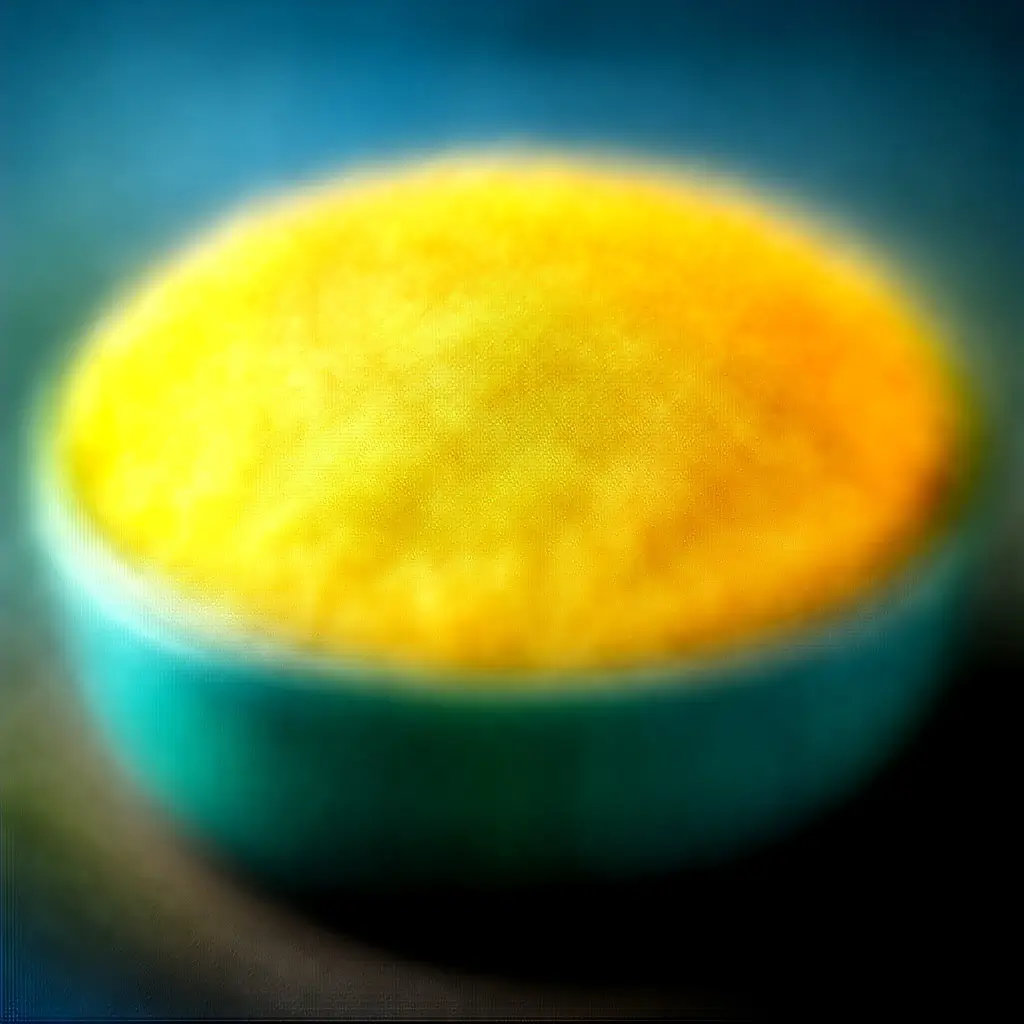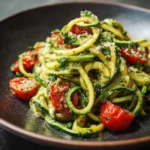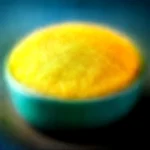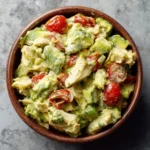Vegan Cauliflower Mac & Cheese: A Creamy, Comforting Plant-Based Classic
There’s something deeply comforting about a warm bowl of mac and cheese—creamy, cheesy, rich, and satisfying. But what if you could enjoy all that comfort without dairy, without cholesterol, and with a generous dose of vegetables? Enter vegan cauliflower mac and cheese—a modern twist on a beloved classic that brings together the velvety texture of traditional mac and cheese with the nutritional powerhouse that is cauliflower. This dish has become a staple in plant-based households, loved by vegans and non-vegans alike for its bold flavor, creamy consistency, and guilt-free indulgence.
The History of Vegan Cauliflower Mac & Cheese
Macaroni and cheese dates back centuries, with roots in Italian cuisine and later popularized in America during the 18th century. Traditionally made with pasta, milk, butter, and cheese, it became a symbol of American comfort food. However, as dietary preferences evolved and more people embraced plant-based lifestyles due to health, environmental, or ethical concerns, the demand for dairy-free alternatives grew.
Cauliflower entered the culinary spotlight as a versatile, low-calorie vegetable capable of mimicking textures and absorbing flavors. Its neutral taste and creamy texture when blended made it ideal for replacing heavy cream or cheese sauces. Around the early 2010s, food bloggers and vegan chefs began experimenting with steamed cauliflower blended into sauces, leading to the birth of vegan cauliflower mac and cheese. It quickly gained popularity through social media, wellness blogs, and cookbooks focused on clean eating and whole-food, plant-based diets.
Today, this dish stands as a shining example of how traditional comfort foods can be reinvented—healthier, cruelty-free, and just as delicious.
Ingredients Breakdown: Why Each One Matters
The magic of vegan cauliflower mac and cheese lies in its ingredients—each one chosen not only for flavor but also for nutrition and function. Here’s a detailed look at the components and their roles:
- Cauliflower: The star ingredient. When steamed and blended, cauliflower transforms into a silky, creamy base that mimics cheese sauce without any dairy. It’s low in calories, high in fiber, and packed with antioxidants like vitamin C and glucosinolates.
- Unsweetened Plant Milk: Typically unsweetened almond, soy, oat, or cashew milk. Adds liquid volume and creaminess while keeping the sauce smooth. Soy milk works especially well due to its higher protein content and neutral flavor.
- Nutritional Yeast: A key player in creating the “cheesy” flavor. This deactivated yeast is rich in B-vitamins (especially B12 if fortified) and provides a savory, umami depth that replicates aged cheese.
- Potatoes (optional but recommended): Waxy potatoes like Yukon Gold add body and thickness to the sauce. They blend into a starchy, creamy emulsion that enhances richness without oil or dairy.
- Carrots (optional): Add subtle sweetness, vibrant color, and beta-carotene. Blended into the sauce, they’re undetectable but contribute to a luscious orange hue reminiscent of cheddar.
- Onion and Garlic: Sautéed or roasted for depth of flavor. They provide aromatic complexity and enhance the umami profile of the sauce.
- Lemon Juice: Brightens the sauce and balances the richness. It also helps preserve the bright color of the cauliflower.
- Dijon Mustard: Adds tanginess and sharpness, mimicking the bite of sharp cheddar cheese.
- Turmeric: Imparts a golden-yellow color, making the sauce look more like traditional cheese sauce. Use sparingly—it’s potent!
- Smoked Paprika or Regular Paprika: Enhances flavor with warmth and a hint of smokiness (if using smoked). Also contributes to the appealing color.
- Salt and Black Pepper: Essential for seasoning and bringing all flavors together.
- Pasta: Choose your favorite short-cut pasta—elbow macaroni, shells, penne, or gluten-free options like brown rice or chickpea pasta for dietary needs.
Step-by-Step Recipe: How to Make Perfect Vegan Cauliflower Mac & Cheese
Making this dish is simple, requiring basic kitchen tools and about 45 minutes from start to finish. Follow these detailed steps for a foolproof, creamy result every time.
- Prepare the Pasta: Bring a large pot of salted water to a boil. Cook your pasta according to package instructions until al dente. Drain, rinse lightly under cold water to stop cooking, and set aside. Tip: Reserve ½ cup of pasta water to adjust sauce consistency later.
- Prep the Vegetables: Cut one medium head of cauliflower into small florets. Peel and dice one small yellow potato and one small carrot (if using). These will blend smoothly into the sauce.
- Steam the Vegetables: Place the cauliflower, potato, and carrot in a steamer basket over boiling water. Cover and steam for 15–20 minutes, or until very tender when pierced with a fork. Do not skip this step—properly cooked vegetables blend into a luxuriously smooth sauce.
- Sauté Aromatics (Optional but Recommended):strong> While the veggies are steaming, heat 1 tablespoon of olive oil or use water for oil-free cooking in a small pan. Add ¼ cup finely diced onion and 2 minced garlic cloves. Sauté over medium heat for 5–7 minutes until soft and fragrant. Transfer to a blender once done.
- Blend the Sauce: Transfer the steamed vegetables and sautéed aromatics to a high-speed blender. Add ¾ cup unsweetened plant milk, ⅓ cup nutritional yeast, 1 tablespoon lemon juice, 1 teaspoon Dijon mustard, ½ teaspoon turmeric, ½ teaspoon smoked paprika, 1 teaspoon salt, and ¼ teaspoon black pepper. Blend on high for 1–2 minutes, scraping down the sides as needed, until completely smooth and creamy. If too thick, add more plant milk, 1 tablespoon at a time. Taste and adjust seasonings—you may want more nutritional yeast for cheesiness or lemon for brightness.
- Combine Sauce and Pasta: In a large mixing bowl or directly in the pot used for pasta, combine the cooked pasta with the blended sauce. Stir gently until every noodle is coated. If the sauce is too thick, gradually stir in reserved pasta water until desired creaminess is reached.
- Optional Baking Step: For a baked version, transfer the mixture to a greased casserole dish. Top with breadcrumbs (use panko mixed with a little olive oil or nutritional yeast for crunch) or crushed crackers. Bake at 375°F (190°C) for 20–25 minutes until bubbly and golden on top.
- Serve Warm: Ladle into bowls and garnish with fresh parsley, chives, black pepper, or a dash of hot sauce for extra kick.
Tips for the Best Vegan Cauliflower Mac & Cheese
- Use a High-Speed Blender: A regular blender may leave chunks. For ultra-smooth results, invest in a Vitamix, Blendtec, or similarly powerful model.
- Don’t Skip the Potato: Even though cauliflower is the base, adding potato dramatically improves creaminess and mouthfeel.
- Steam, Don’t Boil: Steaming preserves nutrients better than boiling and prevents excess water absorption, which can dilute the sauce.
- Season Thoughtfully: Taste the sauce before mixing with pasta. You can always add more salt, lemon, or nutritional yeast, but you can’t take it out.
- Reheat Gently: Leftovers thicken in the fridge. Reheat on the stovetop with a splash of plant milk to restore creaminess.
- Boost Protein: Add white beans (cannellini or navy), lentils, or tofu crumbles to the finished dish for added protein and heartiness.
- Make Ahead: You can prep the sauce up to 3 days in advance and store it in the fridge. Just reheat and mix with freshly cooked pasta when ready.
Variations and Customizations
This recipe is highly adaptable. Here are some creative ways to switch it up:
- Spicy Kick: Add ½ teaspoon cayenne pepper, a dash of hot sauce, or diced jalapeños to the sauce for heat.
- Loaded Veggie Version: Stir in sautéed mushrooms, spinach, broccoli, peas, or roasted red peppers for extra nutrition and texture.
- Bacon-Like Crunch: Top with coconut bacon (coconut flakes tossed with tamari, maple syrup, and smoked paprika) or tempeh bacon bits.
- “Cheddar” Style: Increase nutritional yeast to ½ cup and add 1 teaspoon of onion powder and ½ teaspoon of mustard powder for a sharper flavor.
- Nacho-Style: Mix in diced green chiles, cumin, and top with avocado, salsa, and cilantro.
- Keto-Friendly Option: Replace pasta with spiralized zucchini (zoodles) or shirataki noodles. Note: Sauce may need thickening with a small amount of tapioca starch if using watery veggies.
- Nut-Free Version: Ensure your plant milk is nut-free (e.g., oat, soy, or rice milk) and avoid cashew-based toppings.
- Gluten-Free: Use certified gluten-free pasta and check labels on all ingredients, including nutritional yeast and spices.
Health Considerations and Nutritional Value
Vegan cauliflower mac and cheese isn’t just delicious—it’s a nutritionally balanced meal when prepared thoughtfully. Here’s why it’s a healthier alternative to traditional mac and cheese:
- Lower in Saturated Fat: Traditional mac and cheese is loaded with butter and cheese, high in saturated fats linked to heart disease. This version uses whole plant ingredients, naturally low in unhealthy fats.
- Rich in Fiber: Thanks to cauliflower, potatoes, carrots, and whole-grain or legume-based pasta, this dish delivers significant dietary fiber, supporting digestion and gut health.
- Packed with Vitamins and Antioxidants: Cauliflower provides vitamin C, K, and compounds like sulforaphane that support detoxification and reduce inflammation. Carrots offer beta-carotene for eye and immune health.
- Fortified with B12 (if using fortified nutritional yeast): Crucial for nerve function and red blood cell production—especially important for those on plant-based diets.
- Low in Cholesterol and Sodium (when controlled): Naturally cholesterol-free and lower in sodium if you limit added salt and use low-sodium plant milk.
- Supports Weight Management: Lower in calories than traditional versions, making it suitable for those watching calorie intake—without sacrificing satisfaction.
Nutritional Estimate (per serving, serves 6):
Calories: ~300 | Protein: 10g | Carbohydrates: 50g | Fiber: 8g | Fat: 6g (mostly unsaturated) | Sugar: 6g (natural) | Sodium: 500mg (adjustable)
Note: Values vary based on ingredients used. Using legume-based pasta increases protein; adding beans boosts fiber and protein further.
Ingredients
- 1 medium head cauliflower, cut into florets
- 1 small Yukon Gold potato, peeled and diced
- 1 small carrot, peeled and diced (optional)
- ¼ cup diced yellow onion
- 2 cloves garlic, minced
- ¾ cup unsweetened plant milk (soy or oat recommended)
- 1 tablespoon lemon juice
- 1 teaspoon Dijon mustard
- ½ teaspoon ground turmeric
- ½ teaspoon smoked paprika
- 1 teaspoon sea salt (or to taste)
- ¼ teaspoon black pepper
- 1 tablespoon olive oil (optional, for sautéing)
- 12 oz (340g) pasta of choice (elbow, shell, penne, etc.)
- Water, for steaming and cooking pasta
- Optional toppings: breadcrumbs, fresh herbs, hot sauce, cracked pepper
<3>⅓ cup nutritional yeast
Directions
- Cook pasta in salted boiling water until al dente. Drain and set aside, reserving ½ cup pasta water.
- Steam cauliflower, potato, and carrot in a steamer basket over boiling water for 15–20 minutes until fork-tender. Set aside to cool slightly.
- In a skillet, heat olive oil (or water for oil-free) over medium heat. Sauté onion and garlic for 5–7 minutes until soft and fragrant.
- Add steamed vegetables and sautéed aromatics to a high-speed blender. Add plant milk, nutritional yeast, lemon juice, Dijon mustard, turmeric, smoked paprika, salt, and pepper.
- Blend on high until completely smooth, 1–2 minutes, stopping to scrape down sides as needed. Add more plant milk if too thick.
- In a large bowl, combine cooked pasta and blended sauce. Stir until fully coated. Add reserved pasta water as needed to reach desired creaminess.
- For a baked version: Transfer to a greased 9×13 inch baking dish. Top with breadcrumbs. Bake at 375°F (190°C) for 20–25 minutes until golden and bubbly.
- Serve immediately, garnished with fresh herbs or additional seasonings.
FAQ
Can I freeze vegan cauliflower mac and cheese?
Yes, but texture may change slightly upon thawing. Store in an airtight container for up to 3 months. Thaw in the fridge overnight and reheat on the stove with a splash of plant milk to restore creaminess.
Why is my sauce grainy?
This usually happens if the vegetables aren’t fully cooked or if you’re using a low-powered blender. Ensure veggies are very tender and blend longer. Straining through a fine mesh sieve can help if needed.
Can I make this oil-free?
Absolutely! Sauté onions and garlic in water or vegetable broth instead of oil. The sauce remains creamy and healthy.
Is nutritional yeast necessary?
It’s highly recommended—it provides the signature cheesy flavor. Without it, the sauce will lack depth. No direct substitute, but miso or white bean paste can add umami (though flavor changes).
Can I use frozen cauliflower?
Yes, but ensure it’s thoroughly thawed and drained of excess moisture to prevent a watery sauce.
How long do leftovers last?
Store in an airtight container in the fridge for 4–5 days. Reheat gently on the stove or microwave.
Can I add cheese substitutes?
Yes! Stir in shredded vegan cheddar or melt in a spoonful of vegan cream cheese for extra richness. However, the natural sauce is already rich and satisfying on its own.
Summary
Vegan cauliflower mac and cheese is a wholesome, creamy, and satisfying plant-based twist on a classic comfort food. Packed with nutrients and bursting with flavor, it proves that healthy eating doesn’t mean sacrificing indulgence.










